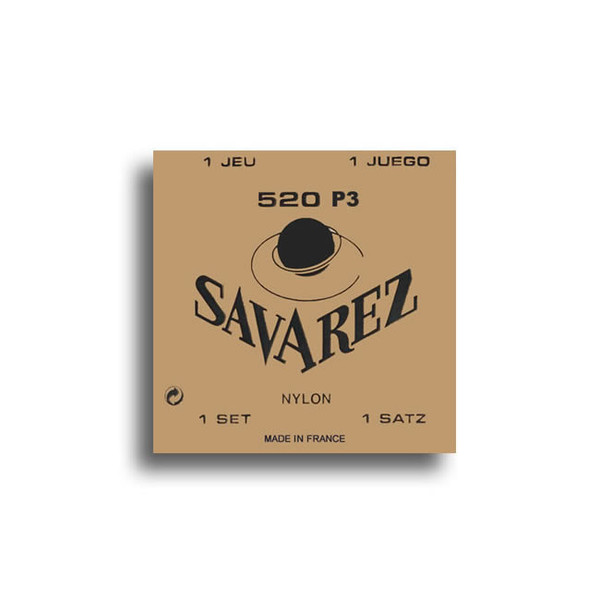Product Overview
Rectified nylon SAVAREZ trebles and Traditional wound SAVAREZ basses.
The name SAVAREZ brings to mind the famous 520R set with red, yellow and white cards, the set which made the Savarez name, a “best seller” yesterday and today ! When they came out, they allowed musicians for the first time to choose between three tensions: RED (Normal Tension) - YELLOW (High Tension) - WHITE (Low Tension).
The Trebles...
Savarez came up with a solution to a problem which nobody had solved before: how to give guitarists the means to play in tune and to choose the ideal tension for strings and guitar to give of their best. The rectification process created and then perfected by SAVAREZ has risen to this challenge.
Now, “NEW CRISTAL” nylon represents the culmination of the technological progress of these traditional strings. The surface texture of rectified nylon limits finger slipping and improves the control of finger placing for greater playing comfort.
The Basses...
These basses have always been our best sellers, and are the fruit of thorough research into raw materials and manufacturing techniques. This research has been carried out in collaboration with musicians in searchof new sonic horizons.
Both Basses & Trebles...
They are checked with high-precision purpose-designed apparatus, kept up to date with each new wave of technological change (computers, high sensitivity stress gauges, laser beams, photoelectric cells etc.)
| Item # | Note | Gauge (in.) | Tension (lbs.) | Material |
| 521R | E/1st | .0278 | 17.40 | Rectified Nylon |
| 522R | B/2nd | .0323 | 13.20 | Rectified Nylon |
| 529R | G/3rd | nylon wound | ||
| 524R | D/4th | .0295 | 16.24 | silverplated copper wound |
| 525R | A/5th | .0339 | 14.54 | silverplated copper wound |
| 526R | E/6th | .0421 | 14.43 | silverplated copper wound |
From the time of their arrival to pre-revolutionary Paris, the Savarez family set about turning string making into a fine art. Savarez has maintained their position with the manufacturing breakthroughs of the 19th-century, the arrival of synthetics in the 1930’s and have continued with the latest techniques through the 1980’s and into the new millennium.







